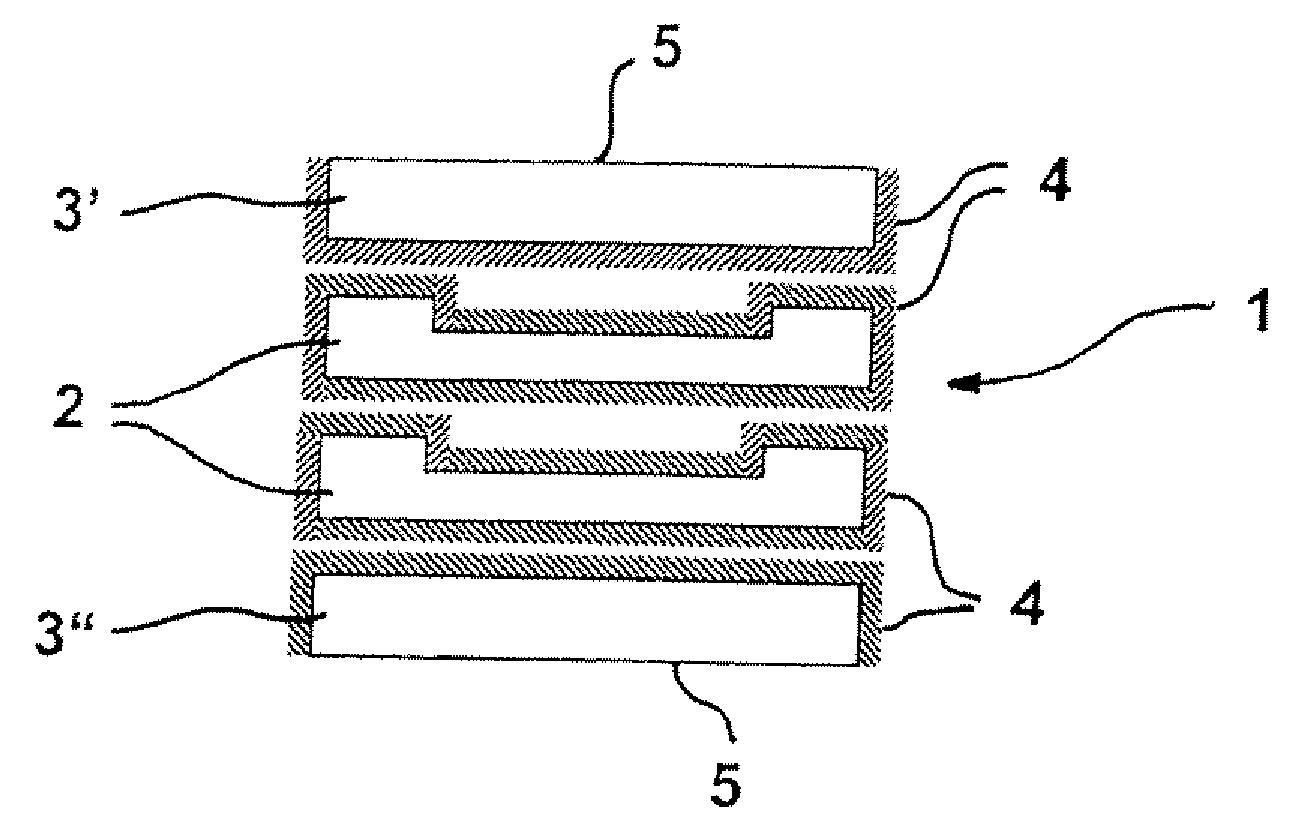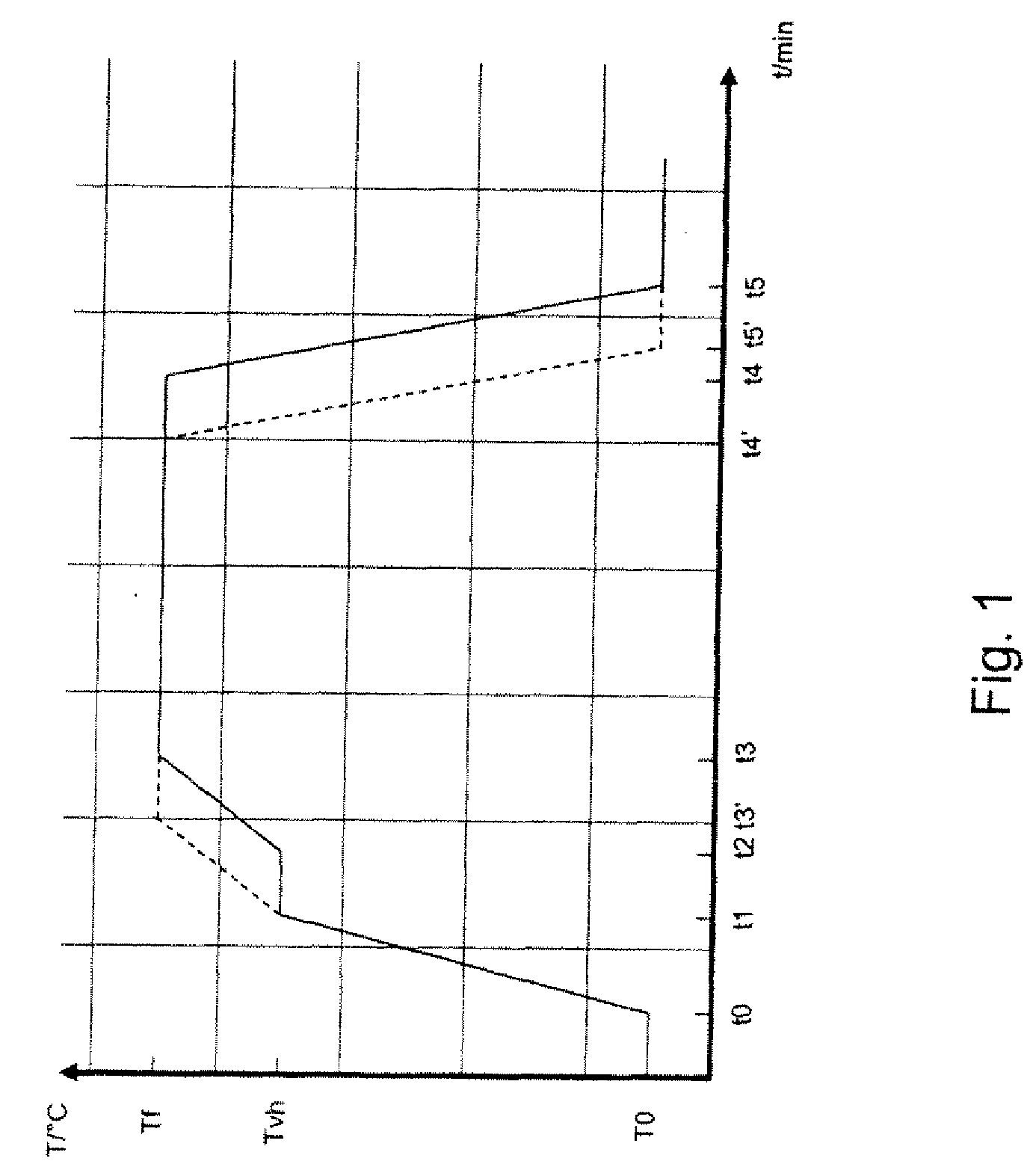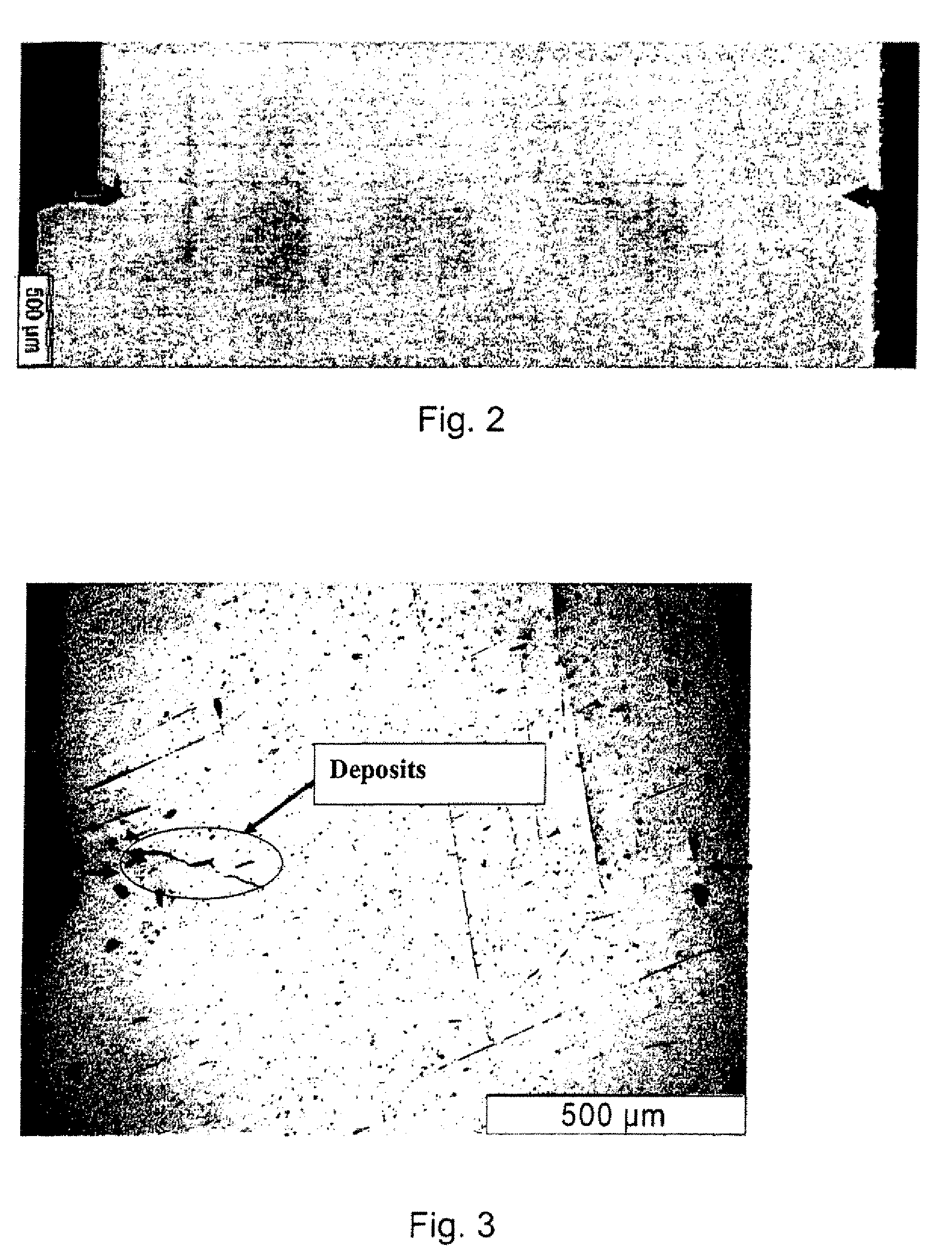Method for bonding work pieces made of stainless steel, nickel or nickel alloys, using a bonding layer consisting of nickel-phosphorous, method for producing a micro-structured component using such method; micro-structured component obtained by such method
a technology of nickel-phosphorous and bonding layer, which is applied in the direction of microstructured components, non-electric welding apparatuses, microstructure devices, etc., can solve the problems of loss of dimensional accuracy of components, deformation or respectively distorted basic materials, and easy cracks in the structure of basic materials, so as to avoid local overheating and cracking, improve strength, and less suitable for dynamic loads
- Summary
- Abstract
- Description
- Claims
- Application Information
AI Technical Summary
Benefits of technology
Problems solved by technology
Method used
Image
Examples
example 1
[0093]Bonding sample cylinders made of Hastelloy® C-4:[0094]NiPx layer thickness: 3 μm[0095]Contact pressure: 1400 kPa[0096]Heat at 25 K / min to 1100° C.[0097]Hold at 1100° C. for 4 h[0098]Cool at 25 K / min
[0099]FIG. 2 shows a scanning electron microscopy image of the bonding zone obtained. There is no boundary face to be seen between the bonded cylinders. Consequently, this is a monolithic structure.
example 2
[0100]Bonding a Component Made from Hastelloy® C-4:[0101]NiPx layer thickness, 4.4 μm[0102]Contact pressure: 30 kPa[0103]Heat at 10 K / min to 800° C.[0104]Continue to heat at 5 K / min to 1100° C.[0105]Hold at 1100*C for 1 h[0106]Cool at 25 K / min
[0107]FIG. 3 shows a light-microscopy image of the bonding zone obtained. Apart from monolithic regions (right-hand side) small isolated deposits can also be seen (left-border). The said small island-like deposits do not compromise the material characteristics. The black dots on the image are artefacts caused by the preparation. Components bonded in this manner were air-tight and showed burst values in excess of 300 bar.
example 3
[0108]Bonding metal strips made from pure nickel:[0109]NiPx layer thickness: 4.8 μm[0110]Contact pressure: 30 kPa[0111]Heat at 10 K / min to 800° C.[0112]Heat further at 5 K / min to 1100° C.
[0113]Hold at 1100° C. for 1 h[0114]Cool at 25 K / min
[0115]FIG. 4 shows a light microscopy image of the bonding zone. The boundary face is no longer visible. Consequently, this is a monolithic bonding seam.
PUM
| Property | Measurement | Unit |
|---|---|---|
| thickness | aaaaa | aaaaa |
| contact pressure | aaaaa | aaaaa |
| thickness | aaaaa | aaaaa |
Abstract
Description
Claims
Application Information
 Login to View More
Login to View More - R&D
- Intellectual Property
- Life Sciences
- Materials
- Tech Scout
- Unparalleled Data Quality
- Higher Quality Content
- 60% Fewer Hallucinations
Browse by: Latest US Patents, China's latest patents, Technical Efficacy Thesaurus, Application Domain, Technology Topic, Popular Technical Reports.
© 2025 PatSnap. All rights reserved.Legal|Privacy policy|Modern Slavery Act Transparency Statement|Sitemap|About US| Contact US: help@patsnap.com



